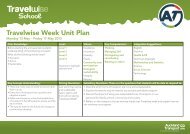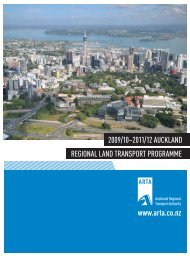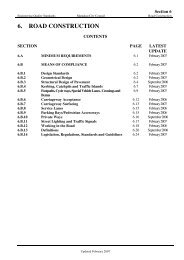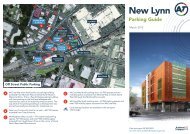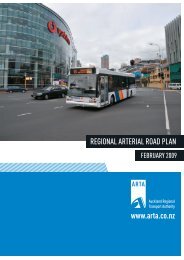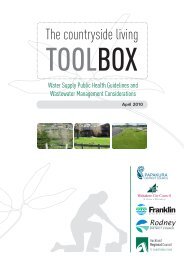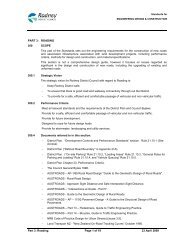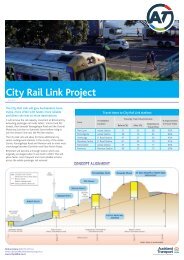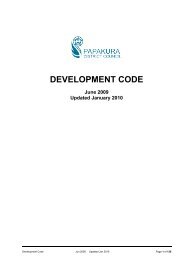Auckland Transport Statement of Intent 2012 - 2015
Auckland Transport Statement of Intent 2012 - 2015
Auckland Transport Statement of Intent 2012 - 2015
Create successful ePaper yourself
Turn your PDF publications into a flip-book with our unique Google optimized e-Paper software.
ATTACHMENT D – <strong>Statement</strong> <strong>of</strong> accounting policies<br />
The principal accounting policies applied in the preparation <strong>of</strong> these financial statements are set out<br />
below.<br />
Basis <strong>of</strong> preparation<br />
<strong>Statement</strong> <strong>of</strong> compliance<br />
The financial statements <strong>of</strong> <strong>Auckland</strong> <strong>Transport</strong> have been prepared in accordance with the requirements<br />
<strong>of</strong> the Local Government Act 2002, which includes the requirement to comply with New Zealand<br />
generally accepted accounting practice (“NZ GAAP”).<br />
These financial statements have been prepared in accordance with NZ GAAP. They comply with<br />
NZIFRS, and other applicable Financial Reporting Standards, as appropriate for public benefit entities.<br />
Measurement base<br />
The financial statements are prepared based on historical cost modified by the revaluation <strong>of</strong> the<br />
following:<br />
financial assets and liabilities at fair value<br />
<br />
<br />
derivative financial instruments at fair value<br />
certain classes <strong>of</strong> property, plant and equipment at methods appropriate to the class <strong>of</strong> asset<br />
The methods used to measure fair value are discussed in the specific accounting policies.<br />
Functional and presentation currency<br />
The financial statements are presented in New Zealand dollars ($), which is <strong>Auckland</strong> <strong>Transport</strong>‟s<br />
functional currency, and have been rounded to the nearest thousand unless otherwise stated.<br />
Costs allocation<br />
Cost <strong>of</strong> service for each activity was allocated as follows:<br />
Direct costs are charged directly to activities. Indirect costs are charged to activities using<br />
appropriate cost drivers such as actual usage, staff numbers and floor area.<br />
<br />
Direct costs are those costs directly attributable to an activity. Indirect costs are those costs that<br />
cannot be identified in an economically feasible manner with a specific activity.<br />
Standards, amendments, and interpretations issued but not yet effective that have not been early<br />
adopted, and which are relevant to <strong>Auckland</strong> <strong>Transport</strong> are:<br />
<br />
NZ IFRS 9 Financial Instruments will eventually replace NZ IAS 39 Financial Instruments:<br />
Recognition and Measurement. NZ IAS 39 is being replaced through the following 3 main phases:<br />
Phase 1 Classification and Measurement, Phase 2 Impairment Methodology, and Phase 3 Hedge<br />
Accounting. Phase 1 has been completed and has been published in the new financial<br />
instrument standard NZ IFRS 9. NZ IFRS 9 uses a single approach to determine whether a<br />
financial asset is measured at amortised cost or fair value, replacing the many different rules in<br />
NZ IAS 39. The approach in NZ IFRS 9 is based on how an entity manages its financial assets<br />
(its business model) and the contractual cash flow characteristics <strong>of</strong> the financial assets. The<br />
financial liability requirements are the same as those <strong>of</strong> NZ IAS 39, except for when an entity<br />
elects to designate a financial liability at fair value through surplus or deficit. The new standard is<br />
required to be adopted for the year ended 30 June 2014. <strong>Auckland</strong> <strong>Transport</strong> has not yet<br />
assessed the effect <strong>of</strong> the new standard and expects it will not be early adopted.



